This is National Wildlife Week and for that, I have chosen some favorite California native plants to show, as well as show one of the areas of my garden, with a mixture of CA natives and Mediterranean plants, that is starting to show some progress.
The setting
The land here is sloped generally 15 degrees and the house pad was made using the standard cut and fill method. The front bank was cut to make room for the house which left a narrow driveway between the hill and the house. The hill is held back with a retaining wall made of ordinary landscape bricks you find at Home Depot or Lowe’s.
Plants on the slope have been slow starting due to the exposed clay and no topsoil and because it’s the nature of some CA natives at first. I raked some existing leaf litter over the raw cut hopefully to encourage whatever native seeds that existed here to grow. There were 5 or 6 small native buckbrush, Ceanothus cuneatus, left on the slope and at the top are three huge Ponderosa pines, several Sticky leafed Manzanitas and an Oracle oak, Quercus morehus that provide shade in the afternoons.
In order to ‘naturalize the bank after planting, I’ve added a few large logs pointing down the slope like is seen along the mountain roads of the high country. These will stop water flowing downhill, and catch more native seeds and litter. Eventually they will decompose, becoming ‘nurse logs’ providing a home for insects and mushrooms.
Natives
These five CA natives were all found on one shopping trip to our local nursery that spacializes in CA natives.
Manzanita ‘Howard McMinn’, Arctostaphylos densiflora
I bought three at Intermountain Nursery in Prather CA., after seeing the fine texture of its leaves and airy growing habit. The clusters of tiny pink flowers are evenly and charmingly spaced on the plant which compliments its texture. Howard McMinn will be the foundation of this slope, getting four to eight feet tall and six to twelve feet wide. It blooms in mid March.
Foothill Penstamon or Mountain Blue Penstemon, Penstemon laetus, is a slow starting perennial that grows two feet across and one foot high whose iridescent violet-blue flowers make it very desirable and worth the wait. There are three here and they bloom in late May.
Dark Star Lilac, Ceanothus impressus x papillosus is one on the small leafed ones and has a beautiful deep blue flower starting in March. I have one planted at the base of the hill where I can trim it to conform to the slope a bit.
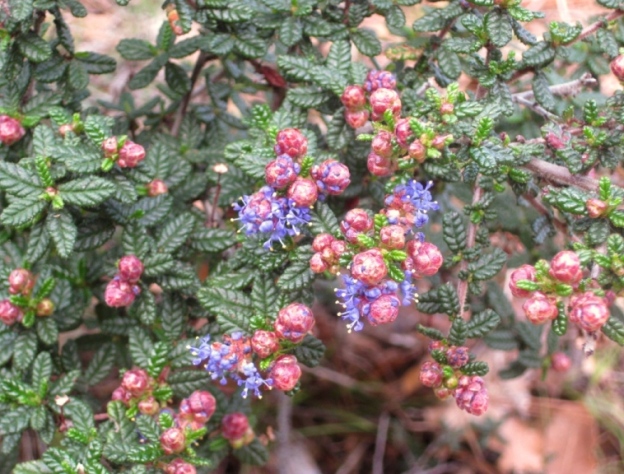
Ceanothus, 'Dark Star' budding in shades of rose and violet in March, before turning a clear blue later.
Salvia ‘Bee’s Bliss’ Cleve. x sonomensis, stays under eight inches or so but spreads four to eight feet across. In spring, it has the typical Cleveland sage blooms stacked up on its low growing stems. This I wanted for May color and for covering the ground, and to attract bees! There are two on the bank.
Radiant Manzanita, Arctostaphylos uva-ursi, is another low grower, native to Northern California. Other common names are kinnikinnick and bearberry. It has a wonderful small leafed texture and will have pink flowers and red berries. There are two widely spaced on the bank.
Non-natives
Other Mediterranean plants along the wall are a line of trailing rosemary and lavender, planted in 2004, a year before we had water. Every month they would be hand watered from the neighbors faucets and I highly recommend them for situations where water is scarce. Centered at the top of the wall is an Orchid Rock Rose, Cistus x purpureus which adds color in late spring.
Because I see this bank out the bay window beyond the Alberta Spruce, I’ve added some white daffodils, ‘Ice Wings’, that have yet to bloom, at the crest of the bank and along the logs for bright spots in Spring. Being early, early in the season, I expect to see some of the others filling in, but now in March the ‘Howard McMinn’ manzanita is really the star of the show.
For tips on planting on a slope, see my Madera County Gardening article on the topic!

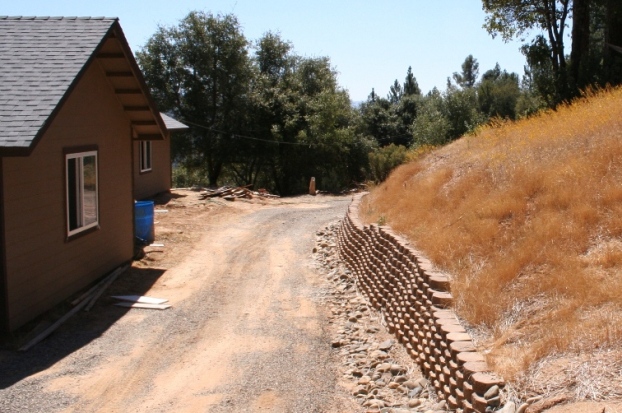
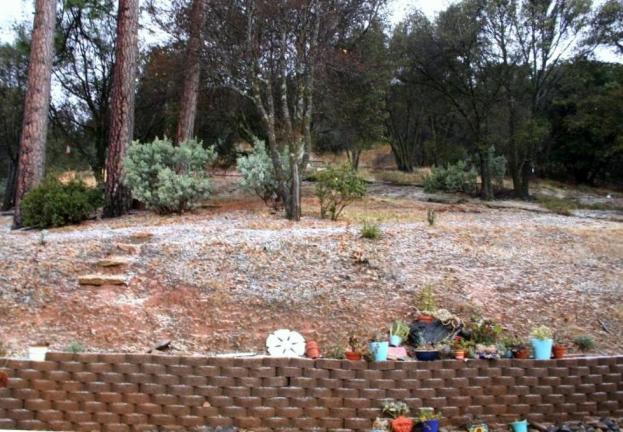
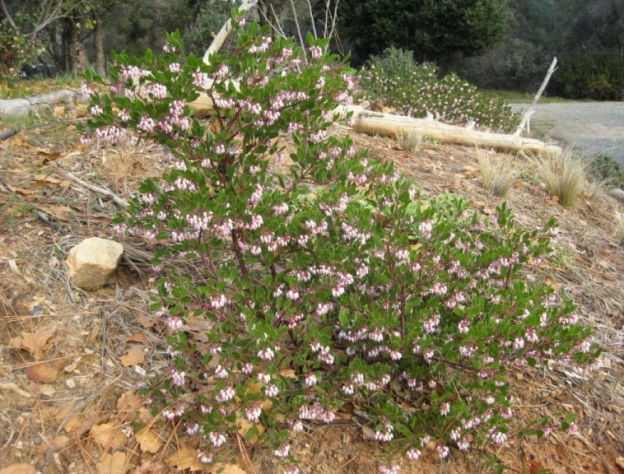
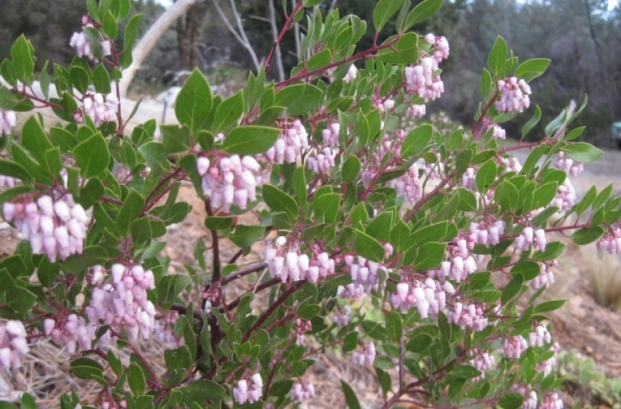
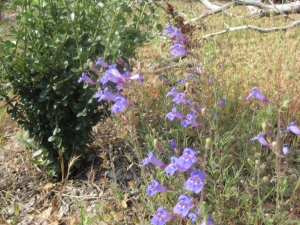
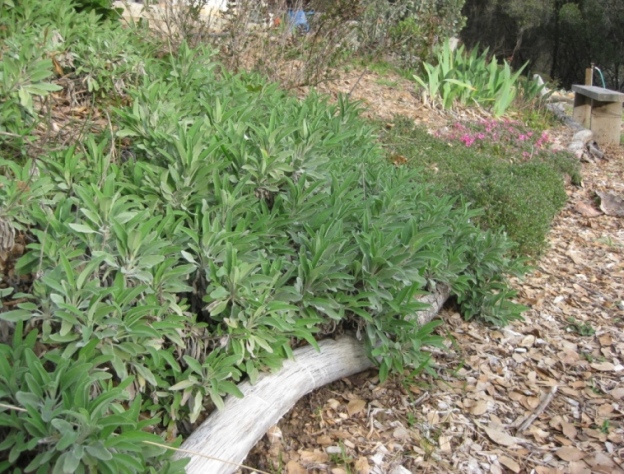
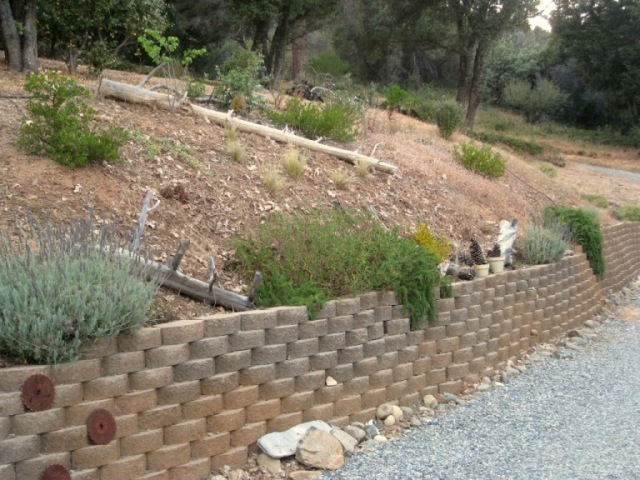
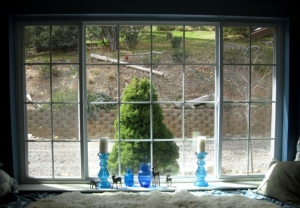
5 comments